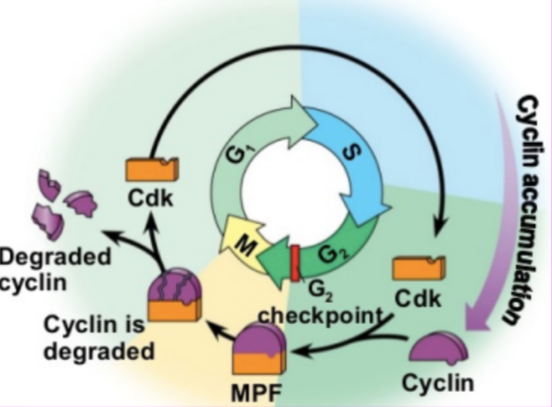🧬 AP Biology Unit 4
10-15% AP Weighting
Topics
4.1 Cell Communication
4.2 Introduction to Signal Transduction
4.3 Signal Transduction
4.4 Changes in Signal Transduction
4.5 Feedback
4.6 Cell Cycle
4.7 Regulation of Cell Cycle
4.1 - Cell Communication
Click Here or videos on cell signaling and signal-transduction pathways
Cells can signal to cells nearby or far away with chemical, electromagnetic, or mechanical signals. Cell signaling allows cells to coordinate their activities. It can aid in reproduction, immune response, transporting molecules, fight-or-flight reactions, and more.
Hormones are a signal used by plants and animals for communicating at a distance. Local Regulators are used for communicating with cells nearby.
Types of Cell Signaling
Paracrine signaling
Used for cells in close contact
Short-lived signals/ligands
Endocrine Signaling
Used for cells long distances away
Long-lasting signals/ligands
Uses hormones as a signal
Some types of hormones, like steroids, can pass through the cell membrane and often use intracellular receptors
One example of this is testosterone receptors. The receptor is a transcription factor, which provides aid to transcription. This way testosterone causes certain genes to be transcribed and certain proteins to be created. Since they induce transcription, it is important for the receptors to be intracellular and near the nucleus, which is why the hormone needs to enter the cell.
Human Growth Hormones (HGHs) are another example
The Endocrine system manages this form of signaling
Autocrine Signaling
Used for cells signaling to itself
This is important for the immune system, cell development, and apoptosis (cell suicide)
This can allow a cell to catch mutations in its own DNA or that it has been infected and self-destruct before it can cause issues
Synaptic Signaling
Used in nerve cells/neurons for communicating with other neurons or causing a response in target cells.
The neuron releases neurotransmitters
If this reaches another neuron, it relays the signal to the next neuron down the line
If this reaches another cell, like a muscle cell, it causes a cellular response such as muscle contractions.
Direct Contact Cell-to-Cell signaling
Cells that physically touch can communicate differently.
Cells can pass signals through gap junctions
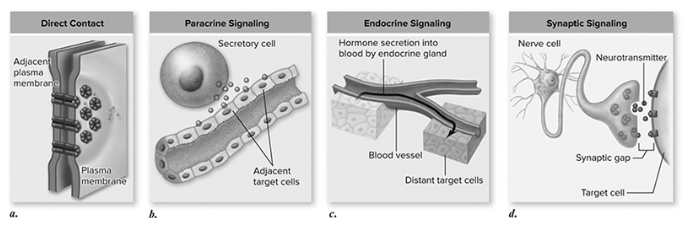
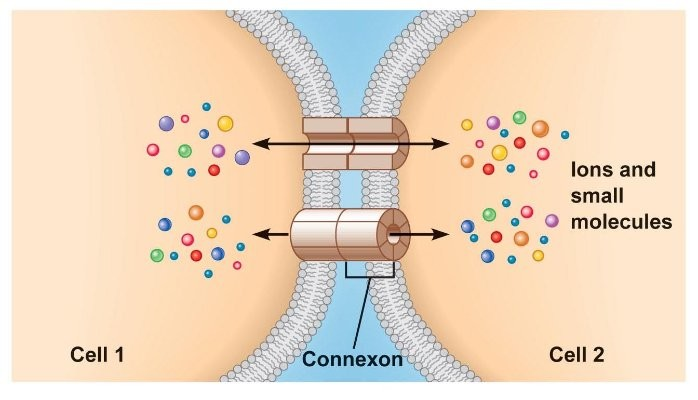
4.2-4.4 - Signal-Transduction Pathways
Click Here or Here for videos on cell signaling and signal-transduction pathways
ATP is energy that can activate proteins. It has 3 phosphate groups. Removing one phosphate group releases energy for the protein to use and this turns the ATP into ADP. ADP only has 2 phosphate groups and cannot activate proteins.
There are three steps to signal-transduction pathways: reception, transduction, and response.
Reception
Reception occurs when a chemical signal, a ligand, binds to a protein receptor. Receptors are ligand specific. Receptors change their shape when a ligand attaches to the receptor, which leads to transduction.
Transduction
The change in the shape of a receptor causes various changes along the signal-transduction pathway. These pathways are very complex, they are similar to a Rube-Goldberg machine. Each pathway is different. Transduction involves phosphorylation cascades and 2nd messengers.
Response
A specific cellular activity is triggered to complete the task required.
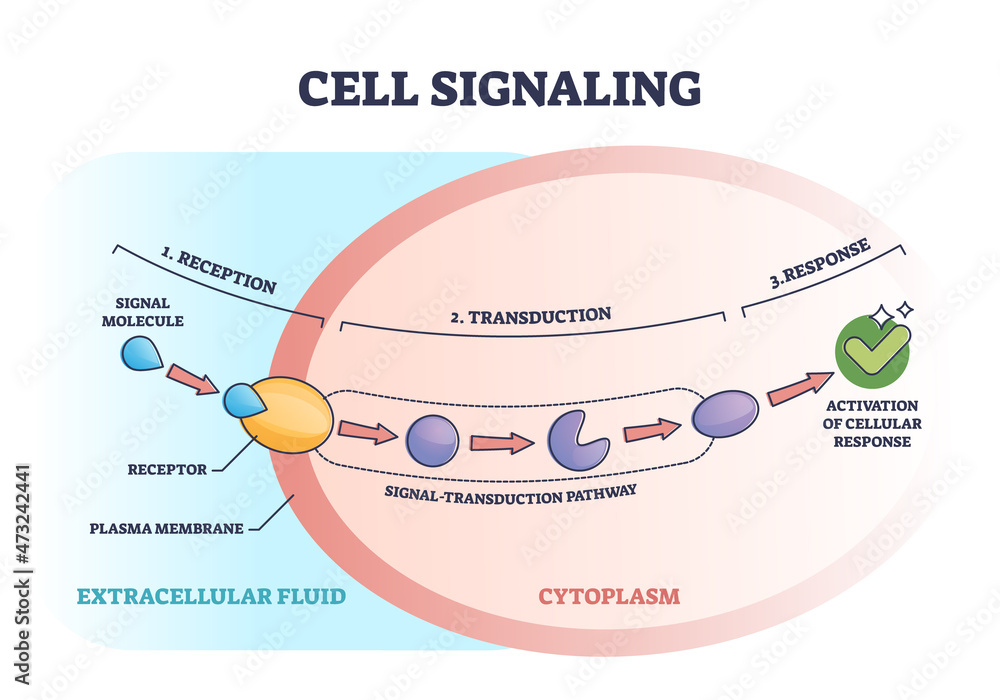
There are three main types of receptors: G-Protein coupled receptors, Enzyme-coupled receptors, and Ligand-gated Ion Channels. The majority of receptors are in the plasma membrane, (Plasma Membrane Receptors) but there are some intracellular receptors.
G-Protein Coupled Receptors
After a ligand binds to the receptor and it changes shape. A G-protein is then attracted to the receptor where the receptor phosphorylates the G-protein with GTP. The protein then moves over to an inactive protein and phosphorylates that, and that protein will produce the cellular response. The G-protein is now inactive again and can redo the cycle.
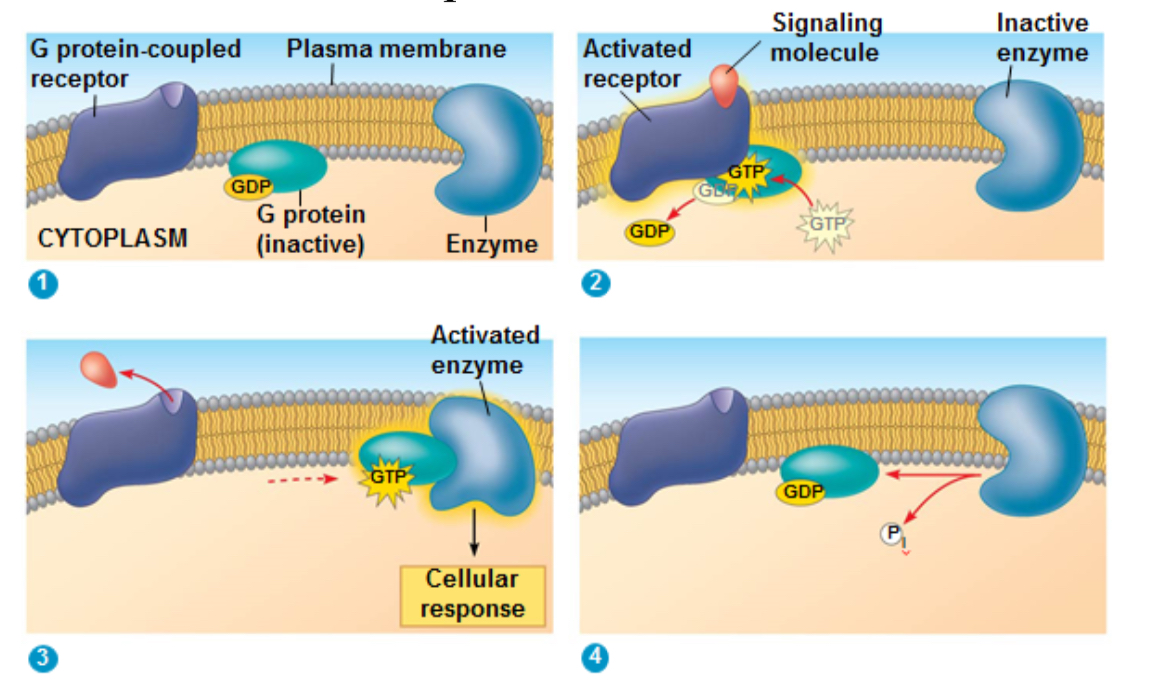
Enzyme-Coupled Receptors
Aka Receptor Protein Kinases (RTKs), Catalytic Receptors
Kinase is an enzyme that phosphorylates other proteins. There are many different kinds of kinases. Enzyme-coupled receptors will phosphorylate itself when a ligand binds to it. These receptors are made of two different pieces that will combine to become a dimer after reception. The dimer has 6 tyrosines that can each phosphorylate a protein, so one ligand can cause 6 proteins to become activated.
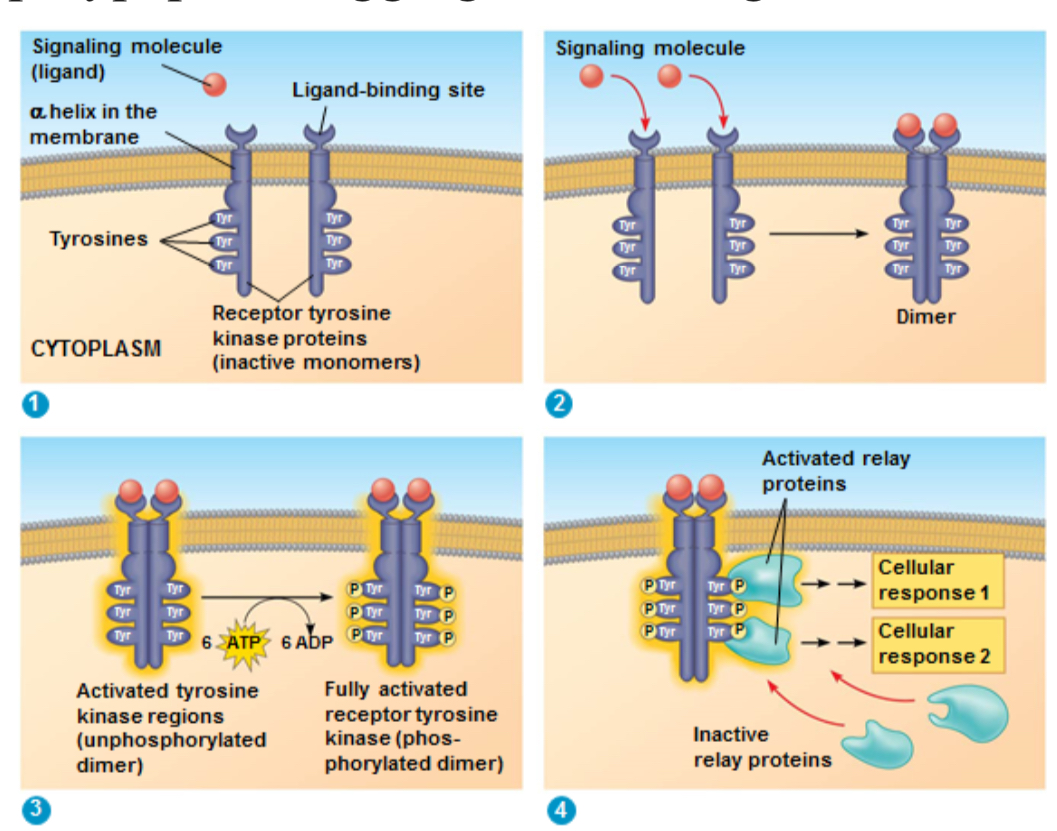
Ligand-Gated Ion Channels
Aka Ion-Channel Receptors
Ligand-Gated Ion Channels are proteins that act as channel proteins when a ligand binds to it. It allows for facilitated diffusion and lets ions in or out of the cell. This change causes the cellular response.
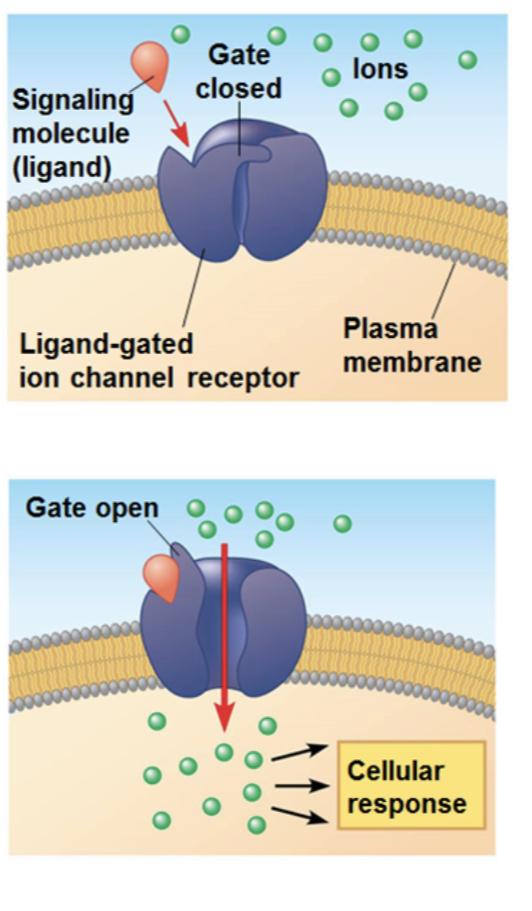
Phosphorylation Cascades
Phosphorylation cascades can amplify a response by turning a single phosphorylated (activated) protein in hundreds or even thousands of activated proteins. Phosphorylation cascades are created by Protein Kinases. Once a protein kinase is activated it will activate several more Kinases, which will also activate more kinases, causing exponential phosphorylation. The Protein Kinases will activate proteins to create a cellular response.
Phosphatase ends the phosphorylation cascade; they’re basically the opposite of kinases. It will dephosphorylate proteins as well as the Protein Kinases so the cell response does not go on indefinitely. It removes a phosphate group from ATP, turning it into ADP, which deactivates proteins.
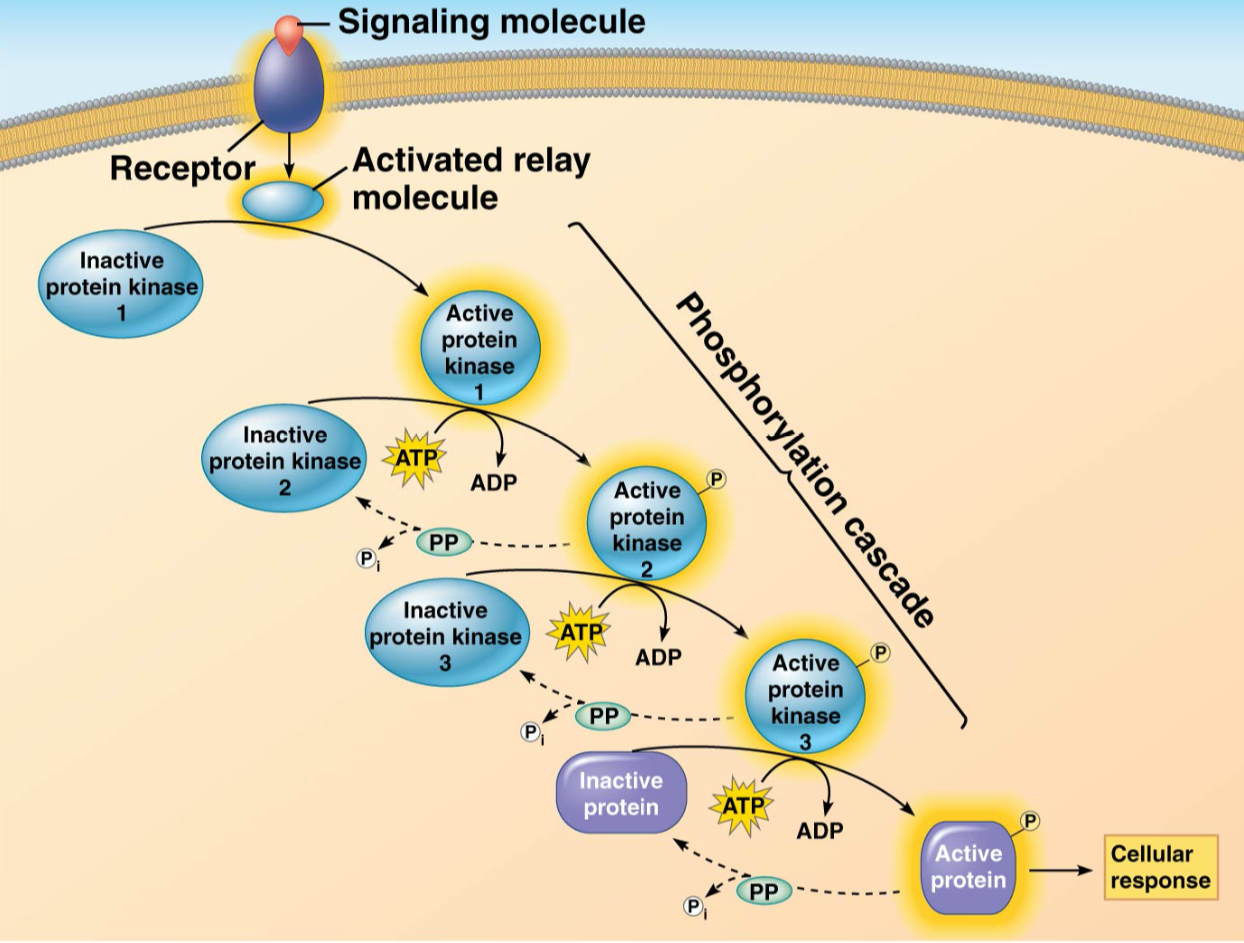
2nd Messengers
2nd Messengers are “relay proteins,” there are no 3rd messengers, but there can be multiple 2nd messengers in one pathway. The most common 2nd messengers are Cyclic AMP (cAMP) and Calcium. Other common messengers are NO, DAG, and IP3. Enzyme-Coupled and G-Protein Coupled Receptors use 2nd messengers but Ligand-Gated Ion Channels do not.
Cyclic AMP (cAMP) is created by the enzyme Adenylyl Cyclase when epinephrine signaling, or other ligands, cause Adenylyl Cyclase to produce it. It acts as a second messenger
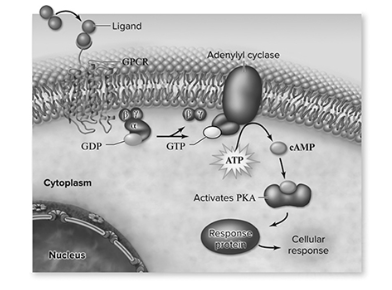
This diagram shows how signal transduction pathways work all together.
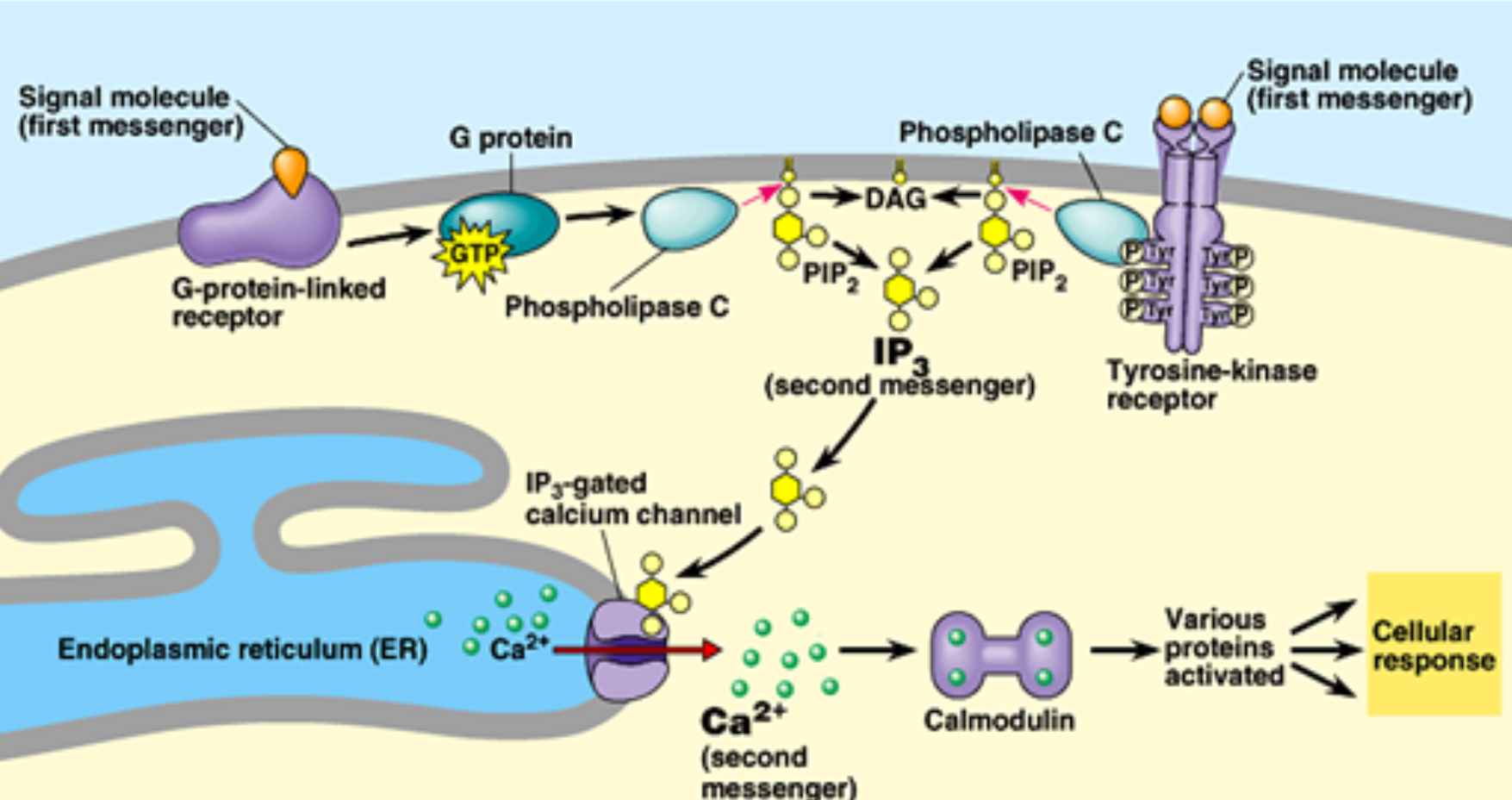
4.4 - Feedback
Click here for a video on feedback
There are two types of feedback in response to a cellular response, positive and negative. When cells receive a signal, they respond, and the response can either amplify or decrease the signal being received.
Positive Feedback
A cellular response to a signal causes the signal to be increased, which is called positive feedback
This causes the response to increase
Causes a constant, self-feeding loop
Similar to the snowball effect
An example of this is labor. When a baby’s head presses against a cervix, this causes the uterus to contract, pushing the baby’s head against the cervix more, causing more contractions. This continues until the baby is born

Negative Feedback
A cellular response fixes the problem, so the signal ends and so does the response
One example of this is sweating. You are hot, so your body begins to sweat, which cools down your body. You are no longer hot, so you stop sweating.
This is more common in biology than positive feedback
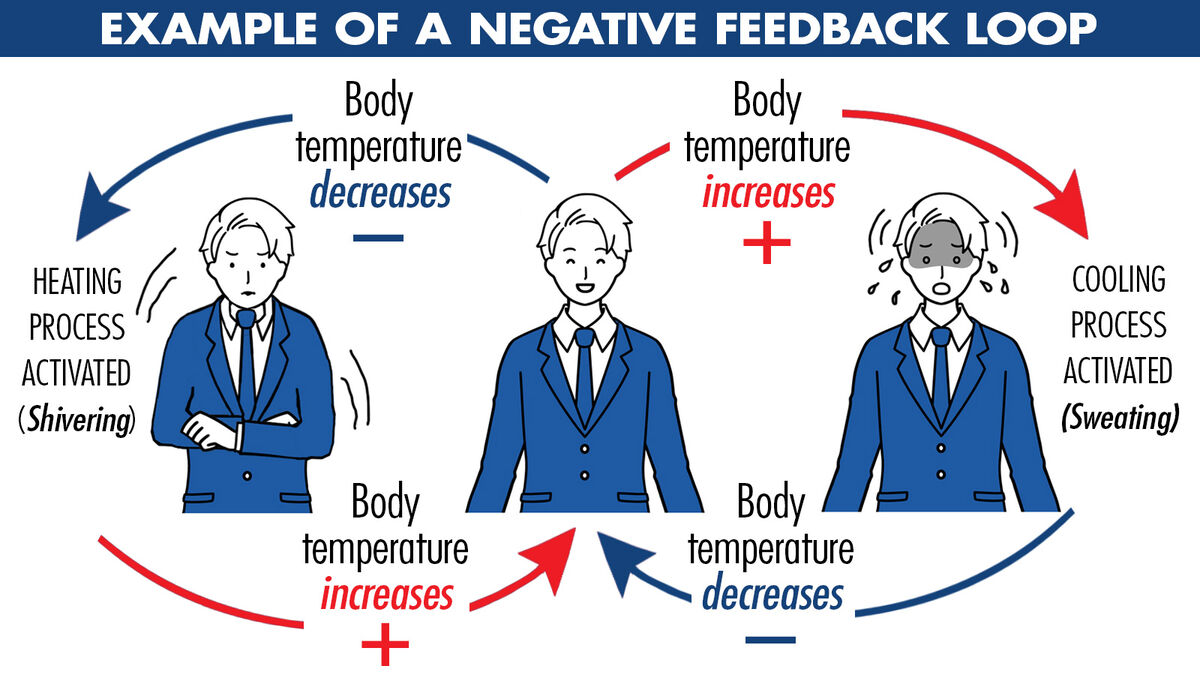
4.6-4.7 - The Cell Cycle
Click Here for a video on the cell cycle.
The Cell Cycle is the life cycle of cells. Cell division is important for replacing dead or damaged cells.
*Prometaphase is not listen in this diagram
There are several steps within the Cell Cycle, not just Mitosis. Mitosis (M phase) produces two identical daughter cells with a complete set of chromosomes.
G1 Phase
The G1 phase occurs just after the cells are created, they grow until they reach a mature size as newly divided cells are smaller than normal cells. During this, some cells exit the cell cycle and enter G0, described below
S Phase
The S (synthesis) phase is the stage where the cell will synthesize DNA with DNA replication so they have enough DNA for 2 cells.
G2 Phase
In the G2 phase The cell grows larger and creates more organelles in preparation for cell division.
M Phase
The M (Mitotic) stage involves several “sub-stages”
Prophase
The DNA condenses into chromosomes.
Prometaphase
The DNA is completely condensed and the spindle fibers are in place and attached to the chromosomes. The nucleus begins to break apart.
Metaphase
The chromosomes line up in the middle of the cell.
Anaphase
The chromosomes get pulled apart by the spindle fibers.
Telophase
The cells begin to split in the process called cytokinesis, the nuclei begin to reform, and the chromosomes begin to unravel.

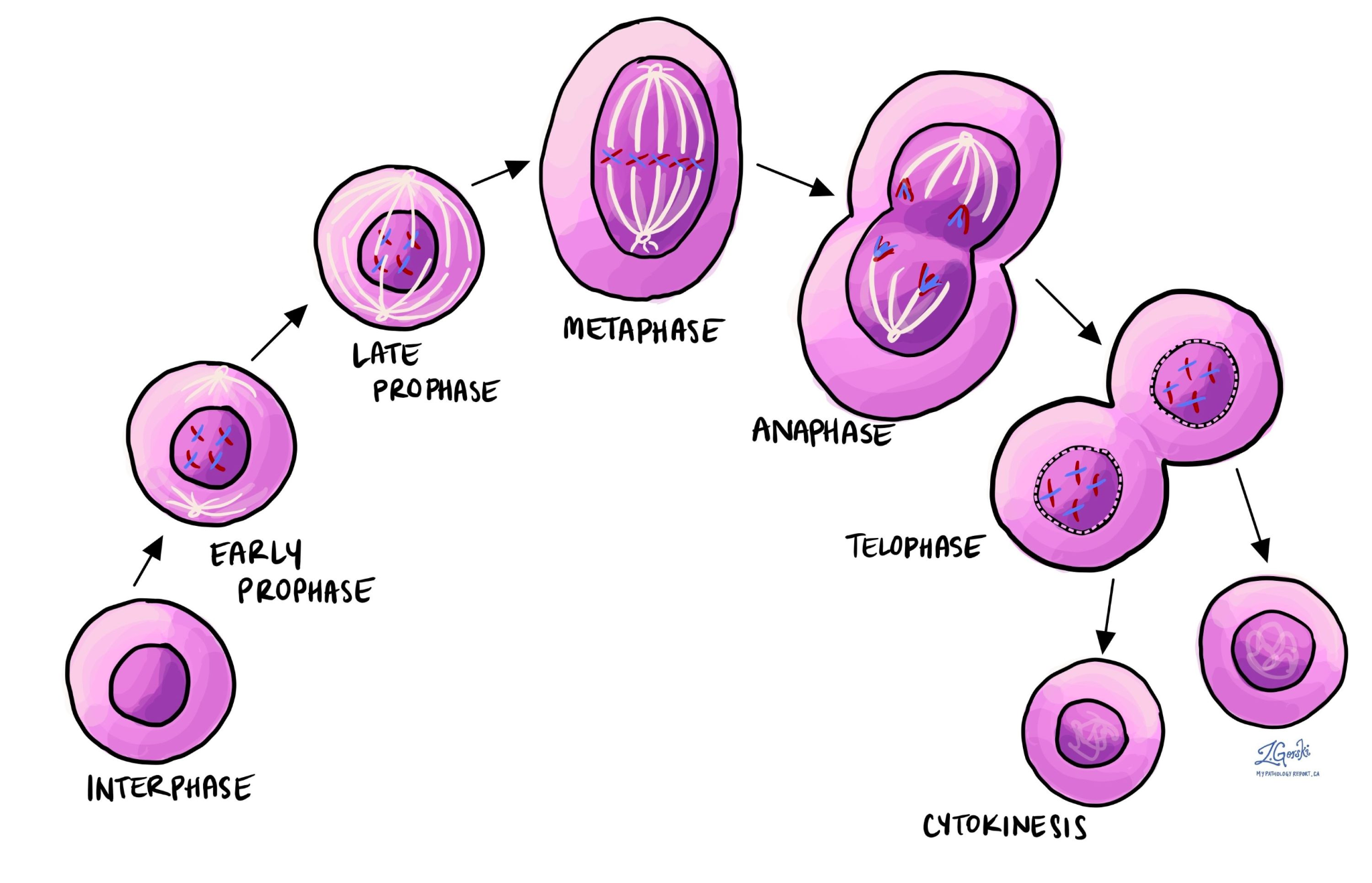
*Late prophase is Prometaphase
G0 Phase
G0 is a phase that only some cells enter. Cells enter this stage when cell division is not needed, it stops the cell from working to divide. These cells just “do their job” and do not try to replicate. Eventually, some cells will exit this phase and enter G2, but some cells remain in G0 for the rest of their lives.
Regulation of the Cell Cycle
The Cell Cycle is a regulated process with various checkpoints the cell must pass to prevent faulty division or mutations. There is a G1, G2, and an M checkpoint. They occur near the end of the stage they’re associated with.
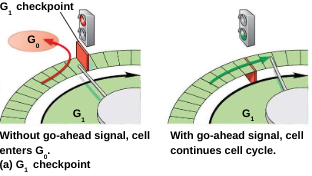
The G1 Checkpoint
The G1 checkpoint checks to see if there is actually a need for the cell to replicate, if not, the cell enters G0. If so, the cell continues to G2.
The G2 Checkpoint
The G2 Checkpoint ensures replication was done correctly, there is enough DNA, and the DNA has been checked for mutations.
The M (Mitosis) checkpoint
The M checkpoint all chromosomes are attached to spindle fibers.
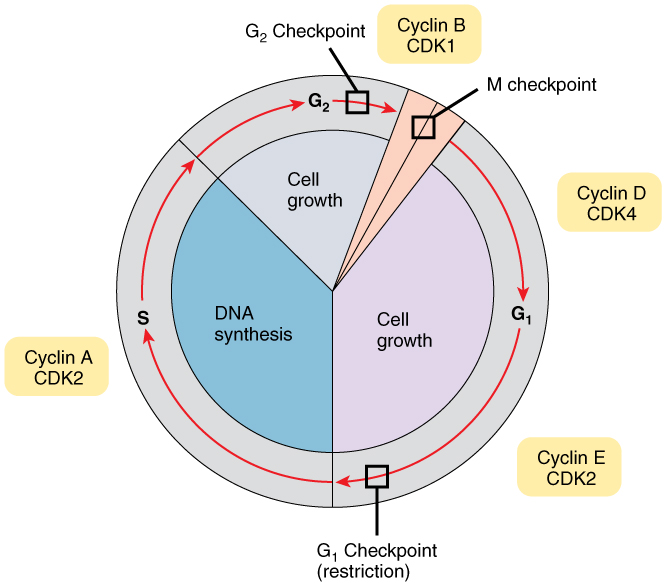
Cyclin is a protein that regulates the cell cycle. The cyclin activates cyclin-dependent kinase (CDK). CDK and cyclin combined are a maturation promoting factor (MPF) which promote mitosis. The cell cycle is density dependent, cells won’t replicate if there isn’t room, which is what the G1 checkpoint looks for. Cancer cells are mutated in a way that causes them to bypass the G1 checkpoint, so they divide constantly. They crowd out other cells and consume all the resources, and since there isn't room for replication, the healthy cells won’t replicate. This is why tumors grow quickly and cause a lack of healthy cells.
